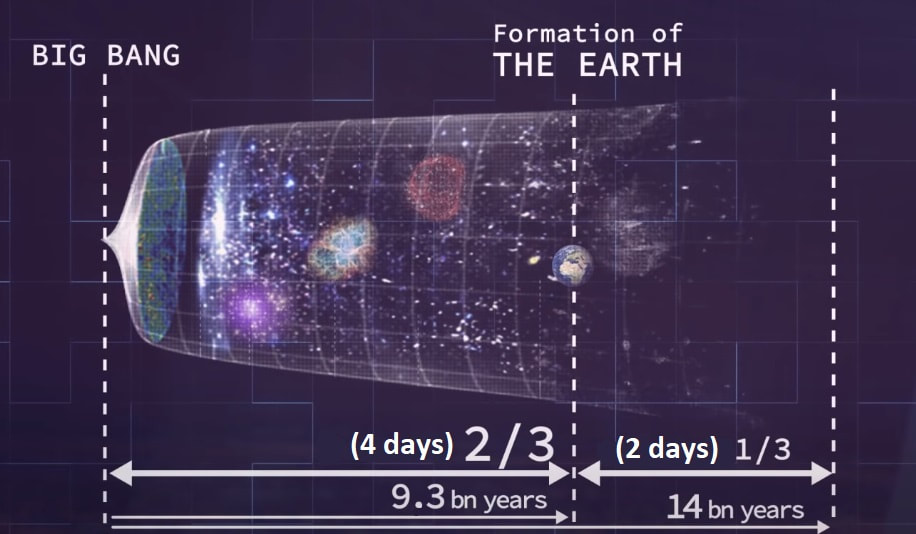Thank you very much. You are absolutely right that ayat is a sign and thus every verse is a sign from Allah and since there are large verses we can even say that every communication within a verse is also a sign of Allah--"ayat". The whole Quran is a linguistic miracle. I've done more research the past couple of days. Here are some findings:
This resource is very helpful to find root words:
http://www.studyquran.co.uk/PRLonline.htmAlif-Ya-Waw = sign, apparent sign, mark, indication, message, evidence, proof, miracle, communication, verse of The Quran. It properly signifies any apparent thing inseparable from a thing not equally apparent so that when one perceives the former, he perceives the other which he cannot perceive by itself.
ayah n.f. (pl. ayat) 2:39, 2:41, 2:61, 2:73, 2:99, 2:106, 2:118, 2:118, 2:129, 2:145, 2:151, 2:164, 2:187, 2:211, 2:219, 2:221, 2:231, 2:242, 2:248, 2:248, 2:252, 2:259, 2:266, 3:4, 3:7, 3:11, 3:13, 3:19, 3:21, 3:41, 3:41, 3:49, 3:49, 3:50, 3:58, 3:70, 3:97, 3:98, 3:101, 3:103, 3:108, 3:112, 3:113, 3:118, 3:164, 3:190, 3:199, 4:56, 4:140, 4:155, 5:10, 5:44, 5:75, 5:86, 5:89, 5:114, 6:4, 6:4, 6:21, 6:25, 6:27, 6:33, 6:35, 6:37, 6:39, 6:46, 6:49, 6:54, 6:55, 6:65, 6:68, 6:93, 6:97, 6:98, 6:99, 6:105, 6:109, 6:109, 6:118, 6:124, 6:126, 6:130, 6:150, 6:157, 6:157, 6:158, 6:158, 7:9, 7:26, 7:32, 7:35, 7:36, 7:37, 7:40, 7:51, 7:58, 7;64, 7:72, 7:73, 7:103, 7:106, 7:126, 7:132, 7:133, 7:136, 7:146, 7:146, 7:146, 7:147, 7:156, 7:174, 7:175, 7:176, 7:177, 7:182, 7:203, 8:2, 8:31, 8:52, 8:54, 9:9, 9:11, 9:65, 10:1, 10:5, 10:6, 10:7, 10:15, 10:17, 10:20, 10:21, 10:24, 10:67, 10:71, 10:73, 10:75, 10:92, 10:92, 10:95, 10:97, 10:101, 11:1, 11:59, 11:64, 11:96, 11:103, 12:1, 12:7, 12:35, 12:105, 13:1, 13:2, 13:3, 13:4, 13:7, 13:27, 13:38, 14:5, 14:5, 15:1, 15:75, 15:77, 15:81, 16:11, 16:12, 16:13, 16:65, 16:67, 16:69, 16:79, 16:101, 16:101, 16:104, 16:105, 17:1, 17:12, 17:12, 17:12, 17:59, 17:59, 17:98, 17:101, 18:9, 18:17, 18:56, 18:57, 18:105, 18:106, 19:10, 19:10, 19:21, 19:58, 19:73, 19:77, 20:22, 20:23, 20:42, 20:47, 20:54, 20:56, 20:126, 20:127, 20:128, 20:133, 20:134, 21:5, 21:32, 21:37, 21:77, 21:91, 22:16, 22:51, 22:52, 22:57, 22:72, 22:72, 23:30, 23:45, 23:50, 23:58, 23:66, 23:105, 24:1, 24:18, 24:34, 24:46, 24:58, 24:59, 24:61, 25:36, 25:37, 25:73, 26:2, 26:4, 26:8, 26:15, 26:67, 26:103, 26:121, 26:128, 26:139, 26:154, 26:158, 26:174, 26:190, 26:197, 27:1, 27;12, 27:13, 27:52, 27:81, 27:82, 27:83, 27:84, 27:86, 27:93, 28:2, 28:35, 28:36, 28:45, 28:47, 28:59, 28:87, 29:15, 29:23, 29:24, 29:35, 29:44, 29:47, 29:49, 29:49, 29:50, 29:50, 30:10, 30:16, 30:20, 30:21, 30:21, 30:22, 30:22, 30:23, 30:23, 30:24, 30:24, 30:25, 30:28, 30:37, 30:46, 30:53, 30:58, 31:2, 31:7, 31:31, 31:31, 31:32, 32:15, 32:22, 32:24, 32:26, 33:34, 34:5, 34:9, 34:15, 34:19, 34:38, 34:43, 36:33, 36:37, 36:41, 36:46, 36:46, 37:14, 38:29, 39:42, 39:52, 39:59, 39:63, 39:71, 40:4, 40:13, 40:23, 40:35, 40:56, 40:63, 40:69, 40:78, 40:81, 40:81, 41:3, 41:15, 41:28, 41:37, 41:39, 41:40, 41:44, 41:53, 42:29, 42:32, 42:33, 42:35, 43:46, 43:47, 43:48, 43:69, 44:33, 45:3, 45:4, 45:5, 45:6, 45:6, 45:8, 45:9, 45:11, 45:13, 45:25, 45:31, 45:35, 46:7, 46:26, 46:27, 48:20, 51:20, 51:37, 53:18, 54:2, 54:15, 54:42, 57:9, 57:17, 57:19, 58:5, 62:2, 62:5, 64:10, 65:11, 68:15, 74:16, 78:28, 79:20, 83:13, 90:19
Lane's Lexicon, Volume 1, pages: 168, 169, 170, 171, 172 ##
http://ejtaal.net/aa/#q=aywAyat properly means a sign or miracle. Thus Quran 3:7 may only be referencing a sign or miracle. Some signs in the Quran are clear and other are ambiguous. Those whose hearts have perversity try to seek an interpretation of those ambiguous signs in order to case discord and misguide others. If this is the case, then Quran 3:7 is not referencing "verses" and as such it is not saying whether some verses or parts of verses are ambiguous or not. So if this is the case, then the Quran does not discuss this and it is left to us to use our intellect and arrive at this conclusion. The Quran is written in poetic form with ambiguity throughout. Life is a test as the Quran explains, and thus the Quran could be part of the test and it could test us partly through ambiguous verses. Either way, we'd understand some verses are ambiguous. The Quran does not have to tell us this and hold our hands throughout everything. In fact, it demands you use your intellect (e.g. 47:24,4:82, 23:68, 38:29, 8:22).
Let's analyze some verses:
Some verses are very long and have very clear things in them, but within those long verses there is some ambiguity.
[Quran 74:31] And We have not made the keepers of the Fire except angels. And We have not made their number except as a trial for those who disbelieve - that those who were given the Scripture will be convinced and those who have believed will increase in faith and those who were given the Scripture and the believers will not doubt and that those in whose hearts is hypocrisy and the disbelievers will say, "What does Allah intend by this as an example?" Thus does Allah leave astray whom He wills and guides whom He wills. And none knows the soldiers of your Lord except Him. And mention of the Fire is not but a reminder to humanity.
It's very unambiguous that this verse is saying he made the angels of the fire 19, but the verse then talks about something that is not made very clear--it even admits that it has some part that is ambiguous by saying "what does Allah mean by this as an example". Then the verse alludes to Allah guiding and misguiding through those ambiguities.
[Quran 56:75] I swear by the setting of the stars
The "I swear" is clear, decisive and unambiguous. But "setting of the stars" is ambiguous, and we are not sure what exactly it is referring to. So this verse has both ambiguous and unambiguous elements, and the full message of the verse is saying that Allah is swearing by something very significant. This verse has both ambiguous and unambiguous elements (and this is just an example, many verses have the same thing going on).
So even without seeing Quran 3:7, we see the Quran has ambiguous and unambiguous elements within it.
But what else does Ayat mean? Sign, apparent sign, mark, indication, message, evidence, proof, miracle, communication, verse of The Quran. If this is the case, then Quran 3:7 could be talking about verses being ambiguous and unambiguous. Or even more, it could be talking about parts of verses being ambiguous and unambiguous (Ayat can mean: messages, communications, indications).
And if Ayat means "sign", then indeed any collection of words in the Quran are ayats. This is because the Quran IS a linguistic miracle/sign for 7th century Arabs and the Quran even challenges them to try to write any part of the Quran--so any part of the Quran (even part of a verse) may be an "ayat" or a sign?
Conclusion: Quran 3:7 may be referring exclusively to miracles/signs or it may be referring to verses and parts of verses (communications/messages in the Quran). Or it could have just been only talking about whole verses which are unambiguous and ambiguous, but doesn't mention verses which have both ambiguous or unambiguous elements and thus
does not exclude their existence nor does it exclude the fact those verses can also be used to test us and guide/misguide us--and we can reason this and we can use our intellect to arrive at this conclusion. Either way, we know the Quran has ambiguous and unambiguous descriptions within it.








